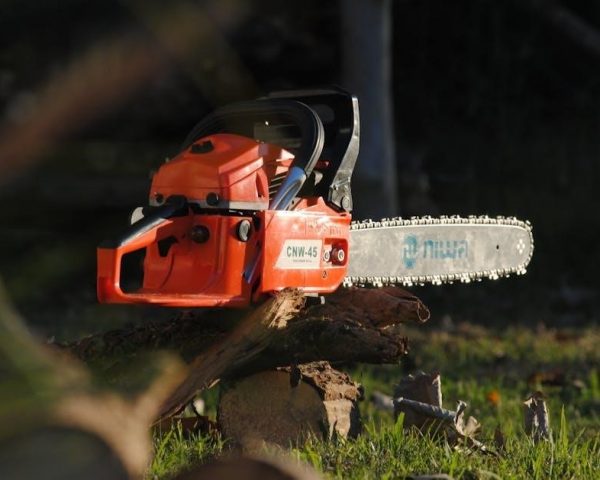Tumbler screeners are essential tools for precise material separation, offering high efficiency and versatility across industries. They utilize advanced 3D motion technology for optimal particle separation and minimal downtime.
1.1 Importance of Tumbler Screeners in Material Separation
Tumbler screeners are vital for achieving precise material separation, ensuring high efficiency and minimal particle destruction. Their unique 3D motion technology enables accurate separation of fine and ultra-fine materials, making them indispensable in industries requiring high-quality output and consistent results.
1.2 Applications Across Various Industries
Tumbler screeners are widely used in industries like food, pharmaceuticals, chemicals, and mining for precise material separation. Their high efficiency in handling dry bulk materials makes them ideal for processing powders, granules, and fine particles. Versatile and adaptable, they ensure accurate separation in various industrial applications, enhancing product quality and operational efficiency while maintaining gentle handling of sensitive materials.
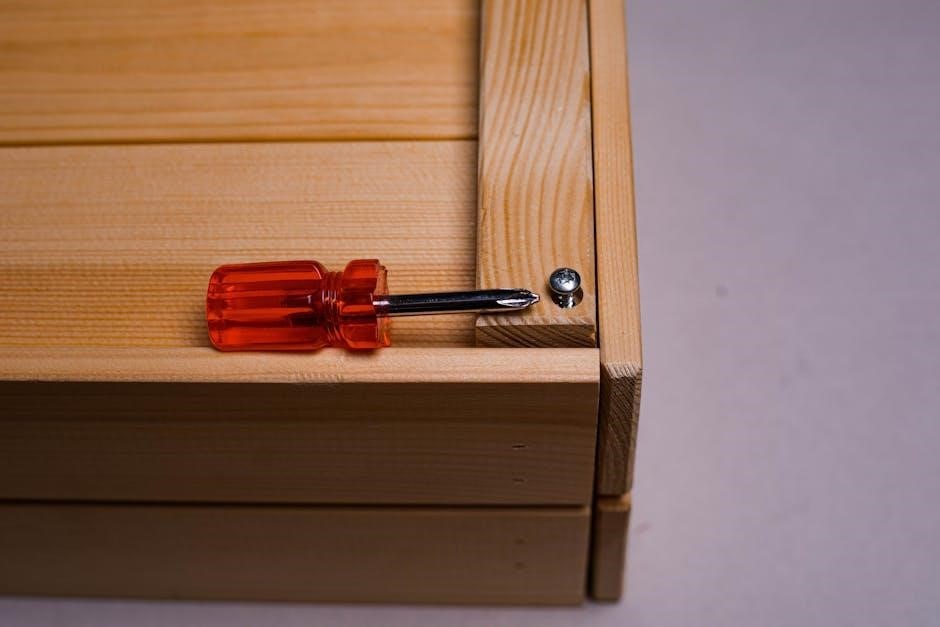
Key Features of Tumbler Screeners
Tumbler screeners feature anti-blinding devices, high-tech 3D motion, and modular designs. They offer efficient particle separation, low installation height, and easy maintenance, ensuring optimal performance.
2.1 Anti-Blinding Devices (Air Knives, Brushes, Ultrasonic, and Bouncing Balls)

Tumbler screeners incorporate anti-blinding devices to prevent material buildup on the screen mesh. Air knives, brushes, ultrasonic cleaners, and bouncing balls ensure efficient separation by keeping the mesh clear. These devices enhance screening accuracy and maintain consistent throughput, reducing downtime and extending the lifespan of the screener. Their integration is crucial for optimal performance in various industrial applications.
2.2 High-Tech 3D Motion for Efficient Particle Separation
Tumbler screeners employ advanced 3D motion technology, combining radial and tangential inclinations to create a helical particle flow. This motion ensures efficient separation of materials, minimizing particle damage and maximizing throughput. The unique motion design allows for precise classification and handling of a wide range of materials, from powders to granules, making it ideal for applications requiring high accuracy and gentle processing.
2.4 Low Installation Height and Modular Design
Tumbler screeners feature a low installation height and modular design, enabling easy integration into restricted spaces. Their compact structure simplifies handling and reduces assembly time. The lightweight, robust design allows for quick disassembly and cleaning, while the modular components ensure flexibility for various applications. This design enhances installation efficiency and minimizes maintenance, making them ideal for industries with limited space and high production demands.
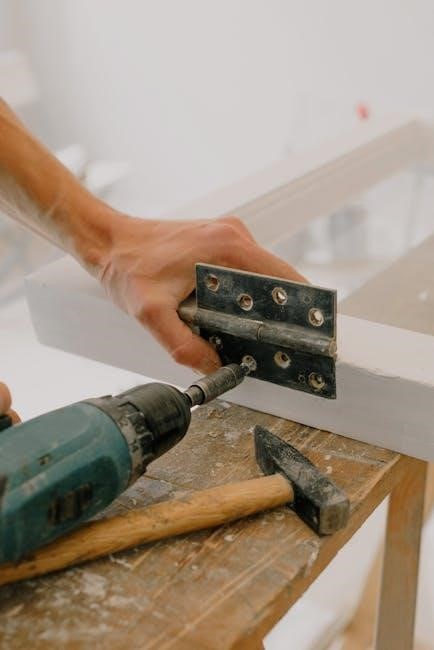
Pre-Installation Preparation
Pre-installation preparation involves verifying all components, ensuring the site is level, and aligning with manufacturer guidelines to guarantee a smooth and efficient installation process.
3.1 Checking the Components and Tools
Before installation, ensure all tumbler screener components, including screen decks, frames, and anti-blinding devices, are present and undamaged. Verify the tools, like wrenches and spirit levels, are available and functional. Cross-reference the provided inventory list with the manufacturer’s manual to confirm completeness and proper condition for a smooth setup process.
3.2 Ensuring the Site is Ready for Installation
Ensure the installation site is clear, clean, and accessible. Verify the surface is level and stable to support the screener’s weight. Check for proper ventilation and proximity to power and pneumatic sources. Confirm the area is free from obstructions and hazards. Ensure all safety protocols are in place before proceeding with the installation process to guarantee a safe and efficient setup.
Installation Steps
Position the screener frame on a leveled surface, ensuring alignment and stability. Assemble screen decks and connect electrical and pneumatic systems carefully to ensure proper functionality and safety.
4.1 Positioning the Screener Frame on a Leveled Surface
Begin by placing the screener frame on a flat, stable surface. Use a spirit level to ensure the frame is perfectly horizontal. Adjust the base as needed to achieve proper alignment. Ensure the surface is even and free from obstructions to guarantee stability. Once aligned, secure the frame firmly to prevent any movement during operation. Proper positioning is critical for optimal performance and safety. Always follow the manufacturer’s guidelines for precise setup.
4.2 Assembling the Screen Decks and Mesh
Begin by aligning the screen decks with the screener frame, ensuring proper fitment and alignment. Secure the decks using the provided clamps or fasteners. Next, carefully attach the screen mesh to each deck, ensuring it is tightly fastened to prevent sagging. Use the quick-clamping system for easy and precise installation. Always refer to the manufacturer’s guidelines for specific torque and alignment specifications to avoid potential issues during operation.
4.3 Connecting Electrical and Pneumatic Systems
Connect the electrical components according to the manufacturer’s wiring diagram, ensuring all terminals are securely fastened. For pneumatic systems, attach the air supply lines to the appropriate ports, checking for leaks. Use a spirit level to ensure proper alignment of connected components. Tighten all fittings and test the systems at low power to confirm functionality before full operation.

Commissioning the Tumbler Screener
Commissioning involves initial testing and calibration to ensure optimal performance. Verify proper screen motion and alignment, then gradually introduce material to confirm smooth operation.
5.1 Initial Testing and Calibration
Initial testing ensures the tumbler screener operates smoothly. Verify the frame is level and all components are secure. Power up the machine without material to check for vibrations or unusual noise. Calibrate the screen motion and amplitude to suit the material. Conduct a trial run with a small sample to ensure proper separation and adjust settings as needed for optimal performance.
5.2 Ensuring Proper Screen Motion and Alignment
Proper screen motion and alignment are critical for efficient separation. Ensure the radial and tangential inclinations are correctly set to achieve the desired helical motion. Regularly inspect and adjust the screen decks to maintain alignment; Use a spirit level to verify the frame’s horizontal alignment and check for any vibration or imbalance during operation. Proper motion ensures optimal material flow and separation accuracy, minimizing downtime and maximizing productivity.
Maintenance and Regular Checks
Regular cleaning of the screen mesh and lubrication of moving parts are essential for smooth operation. Inspect for wear and tear, and replace components as needed to ensure efficiency.
6.1 Cleaning and Replacing the Screen Mesh
Regular cleaning of the screen mesh is crucial to maintain efficiency and prevent material buildup. Use compressed air or a soft brush to remove residue. For replacement, utilize the pneumatic deck lifting system for easy access. Ensure the new mesh is securely clamped and aligned properly. Regular checks for wear and tear can prevent unexpected downtime, ensuring optimal performance and longevity of the screener.
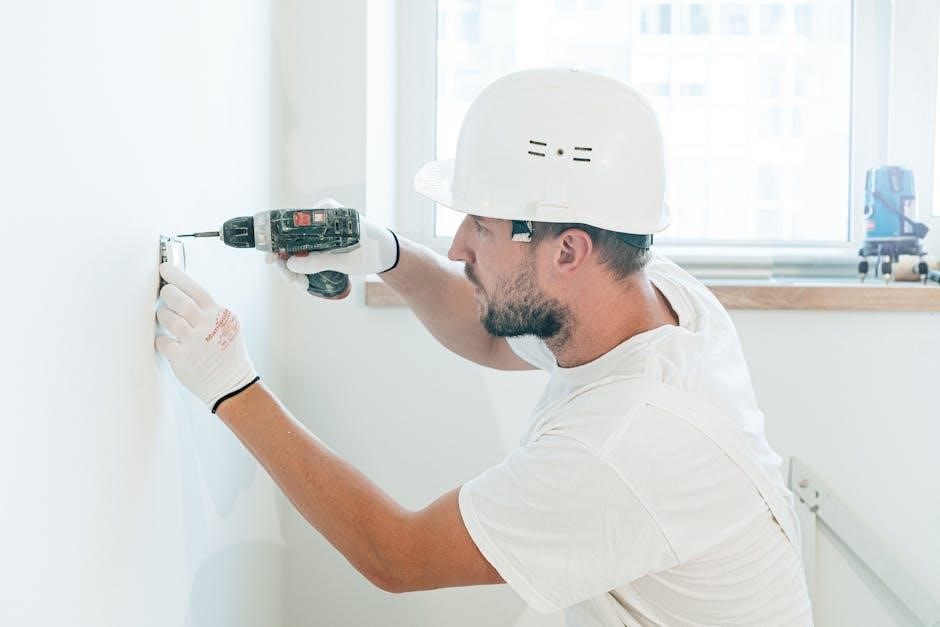
6.2 Lubrication and Inspection of Moving Parts
Regular lubrication of bearings, gears, and other moving components is essential to prevent wear and tear. Use high-performance grease suitable for industrial applications. Inspect parts for signs of wear, misalignment, or overheating. Replace worn components promptly to avoid downtime. Proper lubrication and inspection ensure smooth operation, reduce friction, and extend the lifespan of the tumbler screener, maintaining its efficiency and performance over time.
Safety Considerations
Ensuring a safe working environment is crucial when operating tumbler screeners. Always wear protective gear, ensure proper training, and adhere to safety guidelines to minimize risks and accidents.
7.1 Hazards Associated with Tumbler Screeners

Tumbler screeners pose hazards like entanglement with moving parts, noise exposure, and vibration-related risks. Improper material handling can lead to dust inhalation or chemical exposure. Regular safety audits and proper training are essential to mitigate these risks and ensure a safe working environment for operators and nearby personnel.
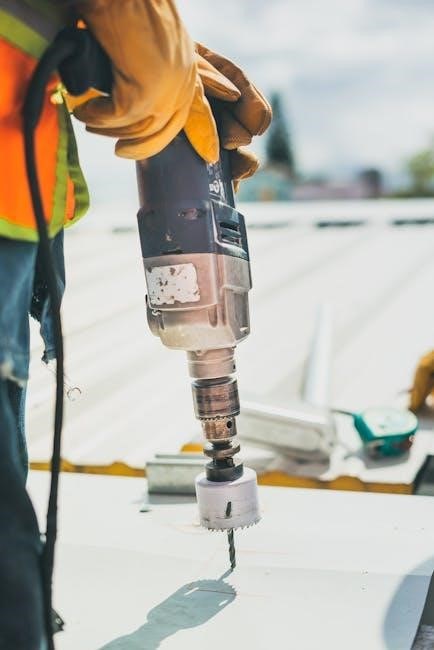
7.2 Implementing Safety Protocols
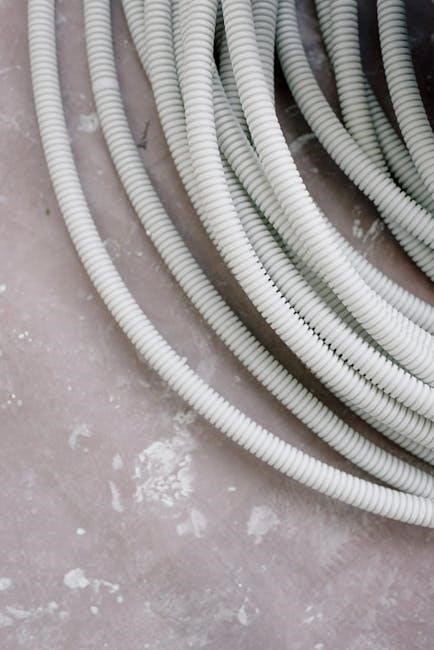
Implementing safety protocols involves wearing PPE, ensuring emergency stops are accessible, and conducting routine inspections. Proper training on machine operation and maintenance is crucial. Regular lubrication of moving parts and timely replacement of worn components prevent accidents. Adhering to manufacturer guidelines ensures a safe working environment and minimizes operational risks associated with tumbler screeners.
Troubleshooting Common Issues
Troubleshooting common issues involves diagnosing problems like screen blinding or vibration imbalance. Regular maintenance and inspections can prevent downtime and ensure smooth operation of tumbler screeners.
8.1 Diagnosing and Resolving Operational Problems
Diagnosing operational issues begins with identifying symptoms like unusual vibrations or noise. Inspect screen meshes for blinding and ensure proper motor alignment. Cleaning or replacing worn parts, such as screen meshes or seals, often resolves problems. Lubricating moving components and checking electrical connections can also restore functionality. Always consult the installation manual for specific troubleshooting guides to address issues effectively and safely.
8.2 Preventative Measures to Avoid Downtime
Regular lubrication of moving parts and inspection of screen meshes for wear are critical. Cleaning the machine frequently prevents dust buildup and ensures smooth operation. Schedule routine checks of electrical connections and anti-blinding devices to maintain efficiency. Proper maintenance extends equipment lifespan and minimizes unexpected shutdowns, ensuring continuous productivity and optimal performance of the tumbler screener.
Tumbler screeners are vital for efficient material separation, offering high precision and versatility. Proper installation and maintenance ensure optimal performance, making them indispensable in various industrial applications.
9.1 Summary of Key Installation and Maintenance Practices
Proper installation involves leveling the frame and assembling screen decks, while maintenance requires regular cleaning, lubrication, and inspections. Adhering to these practices ensures optimal performance, longevity, and safety of the tumbler screener, minimizing downtime and maximizing efficiency in material separation processes across various industrial applications.
9.2 Final Checks for Optimal Performance
After installation, ensure the tumbler screener is properly aligned and leveled. Test the screen motion for consistency and efficiency. Verify all electrical and pneumatic connections are secure. Conduct a trial run to check for any vibrations or noise. Ensure safety protocols are in place and all guards are securely fitted. These final checks guarantee optimal performance, safety, and longevity of the tumbler screener.

References
Refer to the Allgaier Tumbler Screening Machines manual for detailed instructions. Additional resources are available at Allgaier’s official website.
10.1 Links to Manufacturer Manuals and Guides
Access detailed installation guides and manuals from manufacturers like Allgaier and GKM Siebtechnik. These resources provide troubleshooting tips, step-by-step installation instructions, and technical specifications. Refer to Hanningfield for additional setup and maintenance insights, ensuring optimal performance of your tumbler screener.
10.2 Additional Resources for Tumbler Screener Installation
Explore additional resources like online forums, video tutorials, and technical articles for tumbler screener installation. Websites such as Allgaier and GKM Siebtechnik offer detailed guides and troubleshooting tips. These resources provide practical insights and best practices for efficient and safe installation, complementing the official manuals.
